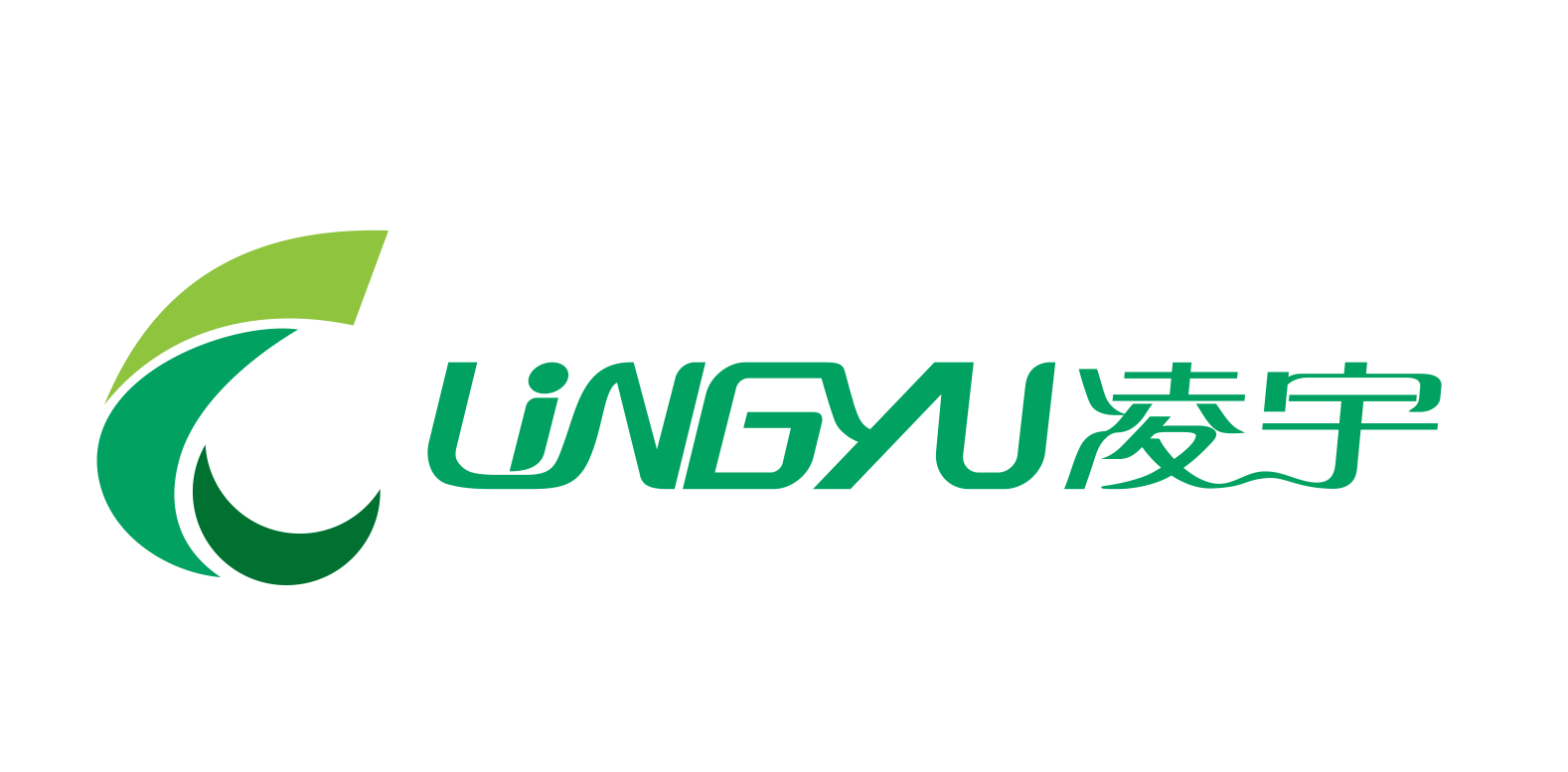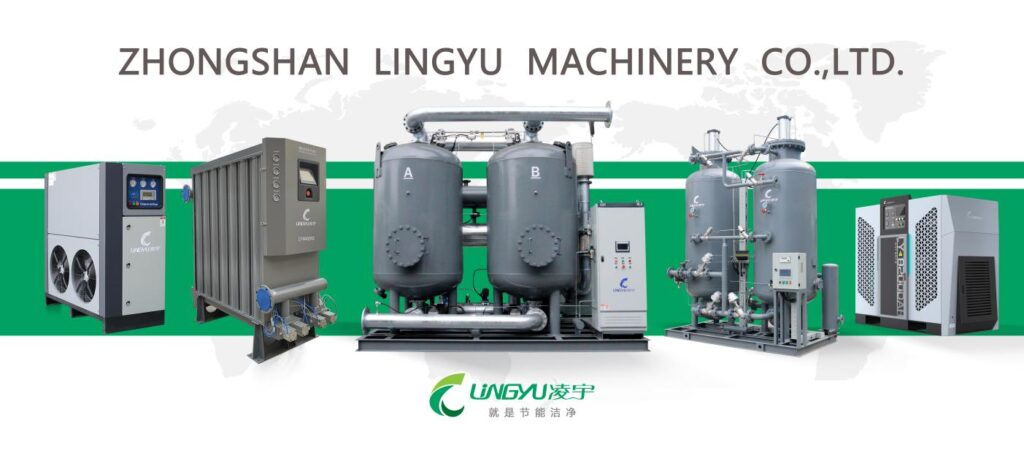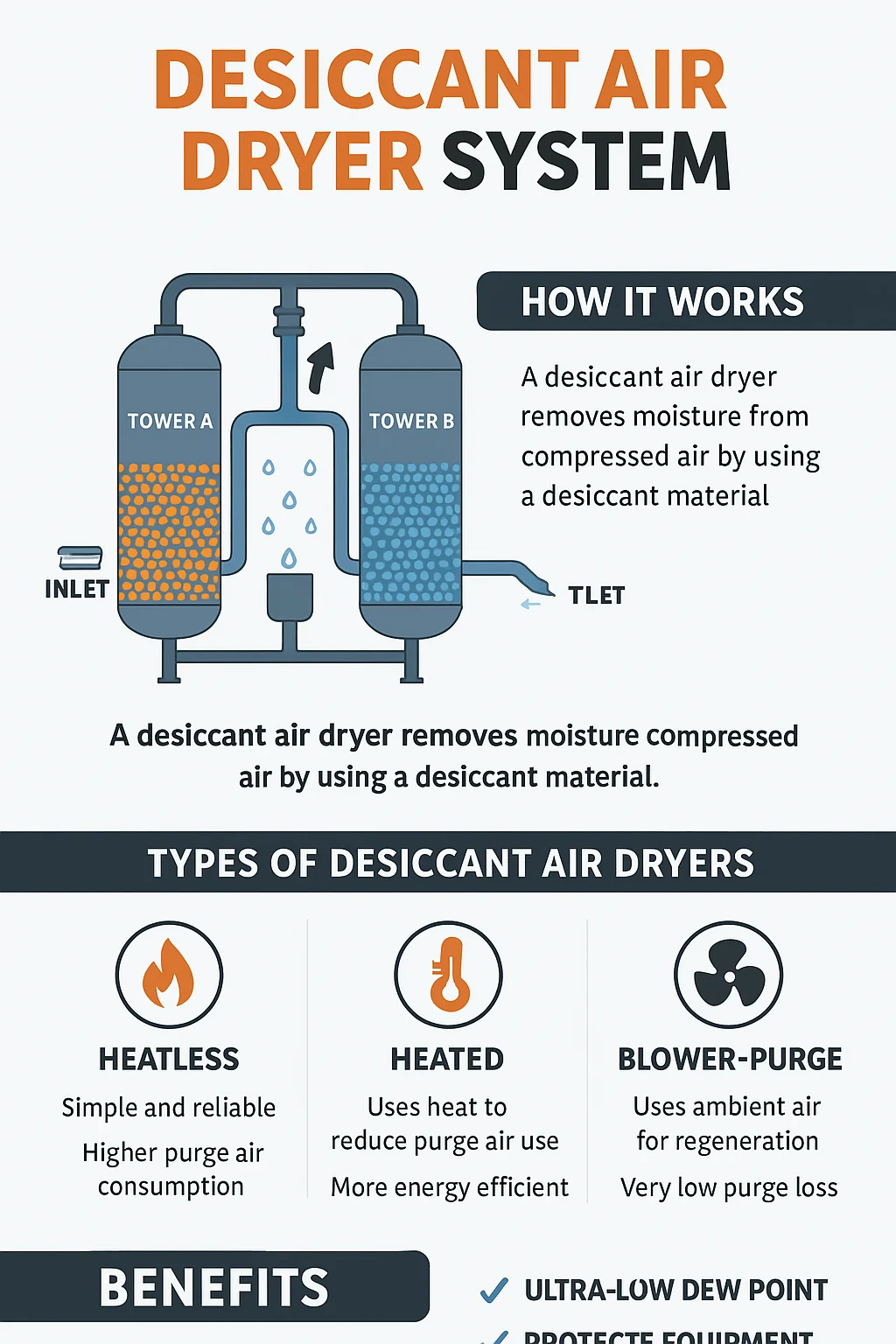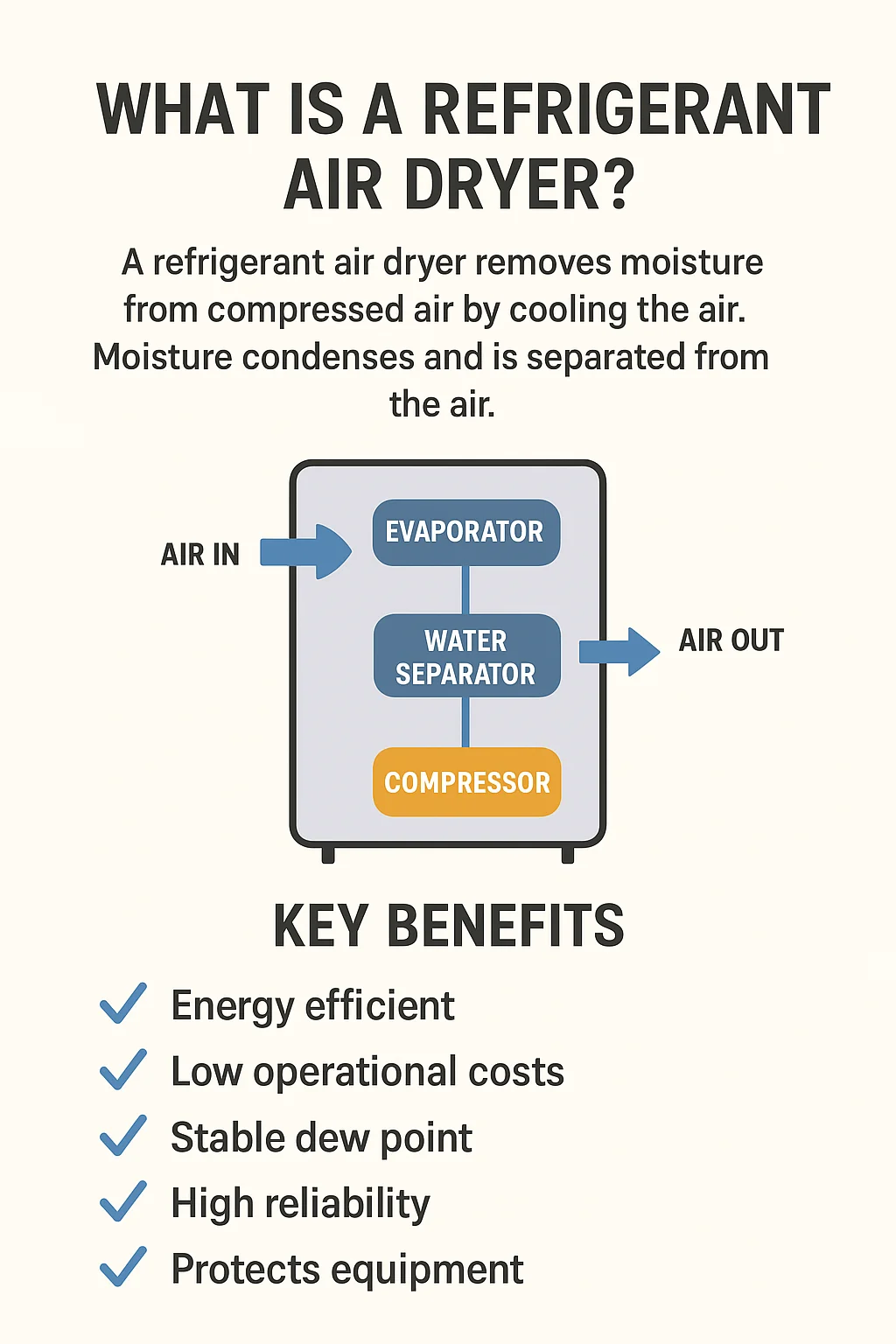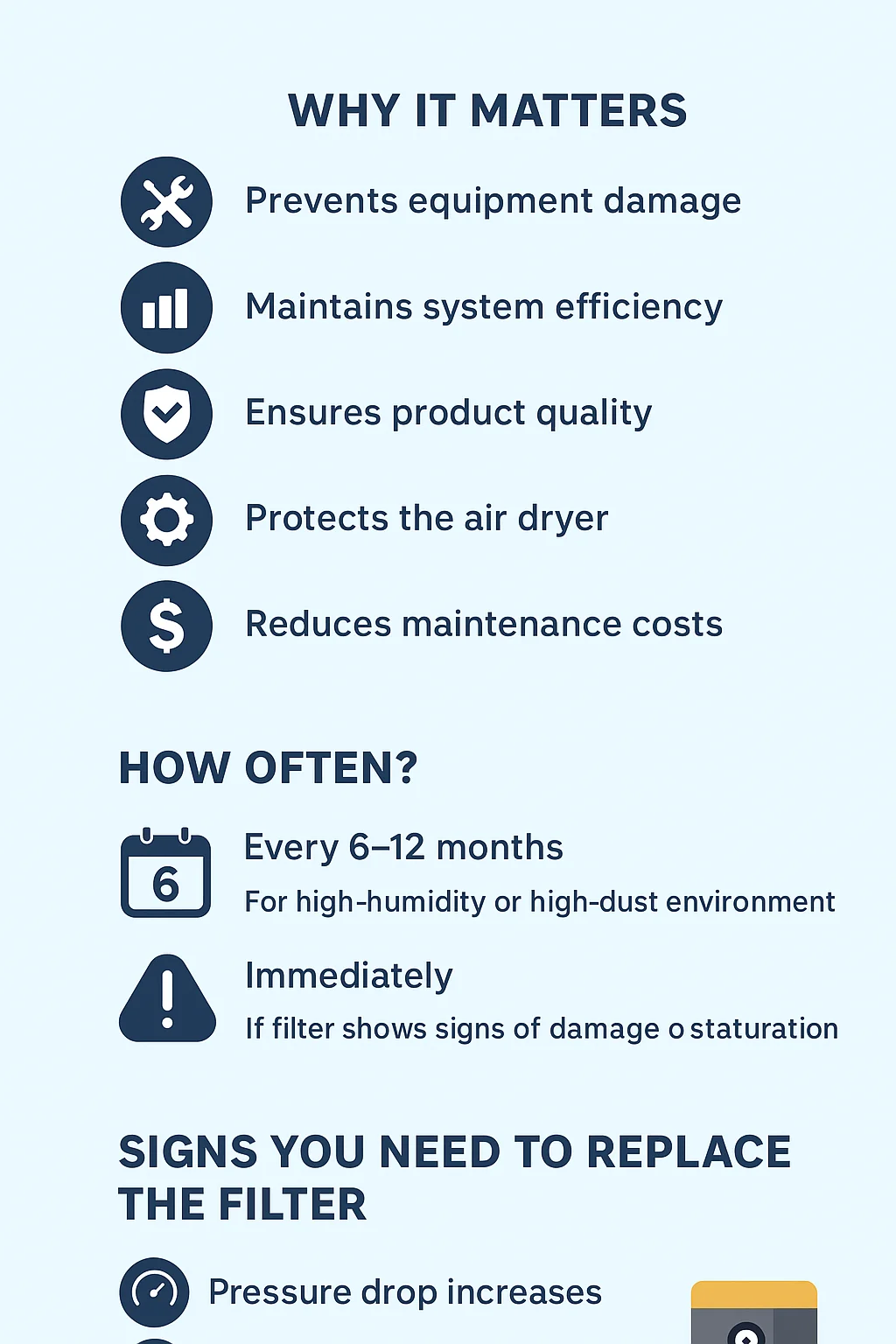In industrial and commercial compressed air systems, controlling moisture is critical for equipment longevity and product quality. This is where compressed air dryer types come into play. Different compressed air dryer types use various methods to remove water vapor from compressed air, each suited for specific applications, industries, and budgets.
In this comprehensive guide, we’ll explore the main compressed air dryer types, their working principles, benefits, and selection tips so you can choose the best system for your needs.
Why Understanding Compressed Air Dryer Types Matters
When air is compressed, its water vapor concentration increases significantly. Without proper drying, moisture can cause:
Corrosion in pipelines and valves
Damage to pneumatic tools and automation equipment
Contamination in food, pharmaceutical, and electronics production
Freezing in outdoor air lines during cold weather
By learning about different compressed air dryer types, you can select a solution that effectively removes moisture and maintains your system’s efficiency.
Main Compressed Air Dryer Types
1. Refrigerated Compressed Air Dryers
This is one of the most common compressed air dryer types. It works by cooling compressed air to around 3°C–5°C (37°F–41°F), which causes water vapor to condense. The liquid water is then separated and drained, leaving dry air.
Advantages:
Low operating costs
Simple maintenance
Reliable for most industrial applications
Best for:
General manufacturing, automotive shops, woodworking, and packaging industries.
Related products:
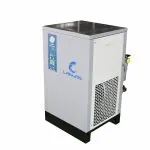
1. Stainless steel plate heat exchanger with high heat exchange efficiency andcompact structure.
2, Independent stainless steel steam-water separator with high water separationefficiency, timely separates condensed water and other impurities fromcompressed air and discharges them out of the machine.
2. Desiccant Compressed Air Dryers
This compressed air dryer type uses an adsorbent material (like activated alumina or silica gel) to trap water molecules from the air. It can achieve dew points as low as -40°C (-40°F) or even lower.
Advantages:
Extremely dry air output
Works well in cold climates or for moisture-sensitive processes
Best for:
Pharmaceutical manufacturing, electronics production, chemical processing, and instrumentation.
Related products:
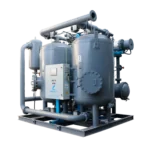
2, The display controller uses a Siemens touch screen, has an RS-485communication interface,and provides a communication protocol
3. Membrane Compressed Air Dryers
Among all compressed air dryer types, membrane dryers are compact and quiet. They use semi-permeable membranes that allow water vapor to pass through while retaining dry air.
Advantages:
No moving parts
Low maintenance
Compact design
Best for:
Point-of-use drying, small-scale operations, and applications with space limitations.
Related products:

Factors to Consider When Choosing Compressed Air Dryer Types
When deciding between compressed air dryer types, consider:
Required Dew Point – How dry does your air need to be?
Operating Environment – Ambient temperature and humidity levels.
Flow Rate – Match dryer capacity to your compressor output.
Maintenance Needs – Availability of skilled staff and parts.
Energy Efficiency – Operating costs over time.
Benefits of Choosing the Right Compressed Air Dryer Types
Protect Equipment – Prevent rust, scaling, and damage.
Improve Product Quality – Maintain strict moisture control in production.
Reduce Downtime – Avoid unexpected failures caused by water damage.
Lower Maintenance Costs – Keep pipelines and pneumatic tools clean.
FAQ – Compressed Air Dryer Types
What is the most common compressed air dryer type?
Refrigerated compressed air dryers are the most widely used for general industrial applications.
Which compressed air dryer type is best for sensitive processes?
Desiccant dryers are ideal for industries requiring extremely low dew points.
Are membrane compressed air dryer types energy efficient?
Yes, they require no electricity and have minimal pressure drop, making them efficient for smaller applications.
How often should compressed air dryer types be serviced?
Maintenance frequency depends on the dryer type, usage, and environment, but generally every 6–12 months.
Can I combine different compressed air dryer types?
Yes, hybrid systems can be used for added protection and efficiency.
Conclusion
Understanding compressed air dryer types is essential for designing an efficient, reliable, and cost-effective compressed air system. Whether you choose a refrigerated, desiccant, membrane, or deliquescent dryer, the right choice will depend on your application, moisture control requirements, and budget.
By selecting the correct compressed air dryer type and maintaining it properly, you can protect your equipment, ensure high product quality, and extend the life of your entire compressed air system.
